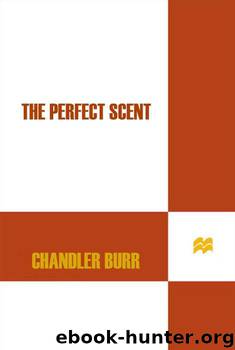The Perfect Scent: A Year Inside the Perfume Industry in Paris and New York by Burr Chandler

Author:Burr, Chandler [Burr, Chandler]
Language: eng
Format: epub
Publisher: Henry Holt and Co.
Published: 2008-01-22T00:00:00+00:00
In other words, of the top twenty, Estée Lauder owned eight, L’Oréal owned four, and Chanel, three. Unilever owned two. Coty owned one, and LVMH owned one. This lineup had changed little since the previous year, 2002, when the top four had been Beautiful, Happy, Pleasures, Romance, all identical to the top four in 2003 and in the identical order. In fifth place was Chanel No. 5. Cashmere Mist had been seventh.
The List is made up of sales data from various sources, the sources change and are never complete, and the full picture is never entirely clear. This means that neither the Big Boys, who make the perfumes, nor the brands, such as Hermès, ever get total information. Still, the List is, generally, an accurate picture of the field. NPD is the company that collects U.S. industry sales data, organizes and analyzes it, and then sells it back to the industry. (Every player buys NPD’s products, and the bigger they are, the more data they buy.) As soon as the bar code on a box of perfume is swiped, it is automatically added to the NPD stats, which at the time covered around 85 percent of stores, though for complicated political reasons not Saks 5th Avenue, which meant that when Narciso Rodriguez’s eponymous scent became a big hit at Saks it didn’t appear on the List because it was a Saks exclusive. Until 2002, NPD didn’t cover Sephora, which made the List look very different after 2002.
NPD recorded that the best Hermès performer in 2003 in (and only in) U.S. department stores (NPD doesn’t collect data from, among others, Hermès boutiques) was 24 Faubourg at $613,945 for 6,513 units (bottles of perfume). As such, 24 Faubourg came in at number 217 on the List, nothing to write home about, to put it mildly. This was the year before Hermès took on Ellena.
In 2002, 24 Faubourg had been $451,027; in 2000, virtually nonexistent commercially—at number 301 on the List—at $7,430. Hermès was playing around the number 300 mark: In 2003, Calèche was number 293 ($164,758), Hiris was number 330, and Rouge Hermès was number 316. The Hugo Boss marketers wouldn’t have gotten out of bed for numbers like these, but on the other hand the Hugo Boss perfume creatives produce nerve gas. Hermès was doing slightly better with the fragrances it marketed to men: Bel Ami came in at number 164 with $105,318, Equipage was number 179 ($42,985), and Rocabar was number 177 ($55,306). (Notice that a men’s number 177 can be $55K, where a women’s number 293 comes in at $164K.)
Chanel No. 5 sales in 2003 were reputed to be around €180 million, “and,” said an executive at Chanel’s most direct rival, “this perfume is eighty years old! It’s unbelievable! It’s not a fragrance; it’s a goddamn cultural monument, like Coke. It’s the reference.”
Hermès’s numbers were nowhere near this. Dubrule discussed them. Everyone else discussed them too. I was having lunch in a restaurant on the place de Barcelone with
Download
This site does not store any files on its server. We only index and link to content provided by other sites. Please contact the content providers to delete copyright contents if any and email us, we'll remove relevant links or contents immediately.
Life 3.0: Being Human in the Age of Artificial Intelligence by Tegmark Max(5193)
The Sports Rules Book by Human Kinetics(4079)
The Age of Surveillance Capitalism by Shoshana Zuboff(3991)
ACT Math For Dummies by Zegarelli Mark(3855)
Blood, Sweat, and Pixels by Jason Schreier(3498)
Unlabel: Selling You Without Selling Out by Marc Ecko(3474)
Hidden Persuasion: 33 psychological influence techniques in advertising by Marc Andrews & Matthijs van Leeuwen & Rick van Baaren(3295)
Urban Outlaw by Magnus Walker(3245)
The Pixar Touch by David A. Price(3217)
Bad Pharma by Ben Goldacre(3102)
Project Animal Farm: An Accidental Journey into the Secret World of Farming and the Truth About Our Food by Sonia Faruqi(3019)
Brotopia by Emily Chang(2899)
Kitchen confidential by Anthony Bourdain(2834)
Slugfest by Reed Tucker(2807)
The Content Trap by Bharat Anand(2781)
The Airbnb Story by Leigh Gallagher(2707)
Coffee for One by KJ Fallon(2423)
Smuggler's Cove: Exotic Cocktails, Rum, and the Cult of Tiki by Martin Cate & Rebecca Cate(2340)
Beer is proof God loves us by Charles W. Bamforth(2252)
